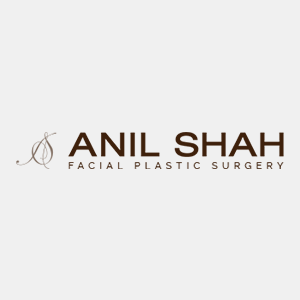
Harvesting Costal Cartilage
Harvesting costal cartilage or rib cartilage for rhinoplasty can be done with a small incision in specific cases. Dr. Shah typically uses an incision from 1-3 cm in size, limiting the size of the scar when possible. Factors which allow a smaller incision include female patients, thinner patients, younger patients and patients without breast implants. In female patients, the intercostal muscles are less robust than in male patients, allowing for a smaller incision. Thinner patients will have less subcutaneous fat which can make a smaller incision less feasible. In older patients, the costal cartilage can become calcified, which can again require a slightly larger incision. Finally, it is possible to harvest costal cartilage in patients with breast implants but several modifications of technique are required to protect the integrity of the breast implant.
Costal cartilage has the advantage of being an abundant source of material to work with and this can be used in revision rhinoplasty as well as in some cases of primary rhinoplasty (typically Asian rhinoplasty patients). While harvesting cartilage from the rib cage is an important part of some cases of revision rhinoplasty, even more importantly is how the surgeon carves the rib. The technique of costal cartilage has been in use as revision rhinoplasty has become more complex due to more aggressive primary rhinoplasty techniques being utilized.
Frequently Asked Questions
Is costal cartilage a new experimental technique?
No, costal cartilage has been used since at least 1969 when two Japanese surgeons described its use (Ota Y, Kuramitsu H). However, there is a resurgence in its use due to the limitations that have been reached with other grafting materials such as septal cartilage (not enough material for revision cases) and auricular cartilage (too weak for many supportive structures of the nose). Dr. Shah utilizes costal cartilage in a manner so that the nose is supported without creating excess bulk.
Can Dr. Shah describe his technique in great detail?
His technique with costal cartilage allows him to use thinner pieces of costal cartilage in a manner in which the nose does not appear overly wide. This requires a modification of techniques used and specialized grafting technique.
Where did Dr. Shah develop his technique?
Dr. Shah finds inspiration for innovation in unconventional sources. A close colleague of Dr. Shah is a prominent architect in the San Francisco. By learning about foundational support for housing and building, Dr. Shah was able to modify his technique to utilize smaller, thinner pieces of costal cartilage while still maintaining adequate structural support.
Can I read more about Dr. Shah’s technique of carving costal cartilage?
He has not published the technique as of yet.
I would rather not have costal cartilage. Are there any other choices?
Yes, but every choice in rhinoplasty has pros and cons. Costal cartilage has the advantage of being autologous, meaning coming from self with living cells with the main disadvantage of donor morbidity and difficulty in its use. Irradiated rib, aka cadaver rib, can be used in older patients but does NOT contain living cells. This means long term structural support of the graft is not likely. This has been confirmed in a study by a surgeon in the Netherlands. In addition, ear cartilage, is not as plentiful, and is not as strong as costal cartilage so is not ideal for structural support of the base of the nose. Finally, artificial implants have the advantage of no donor site but can create significant issues including extrusion and infection.
What can I do to minimize the scar on my chest?
Every patient heals differently however we recommend the use of silicone sheeting for the first 6 months after surgery.
Is costal cartilage harvest painful?
Since Dr. Shah does not cut muscles, it is typically limited to discomfort for the first three days for most patients and limited to discomfort with coughing. However, all patients respond to pain differently. In addition, costal cartilage taken from near the abdomen region can be uncomfortable, which is one of the reason Dr. Shah does not use this method.


